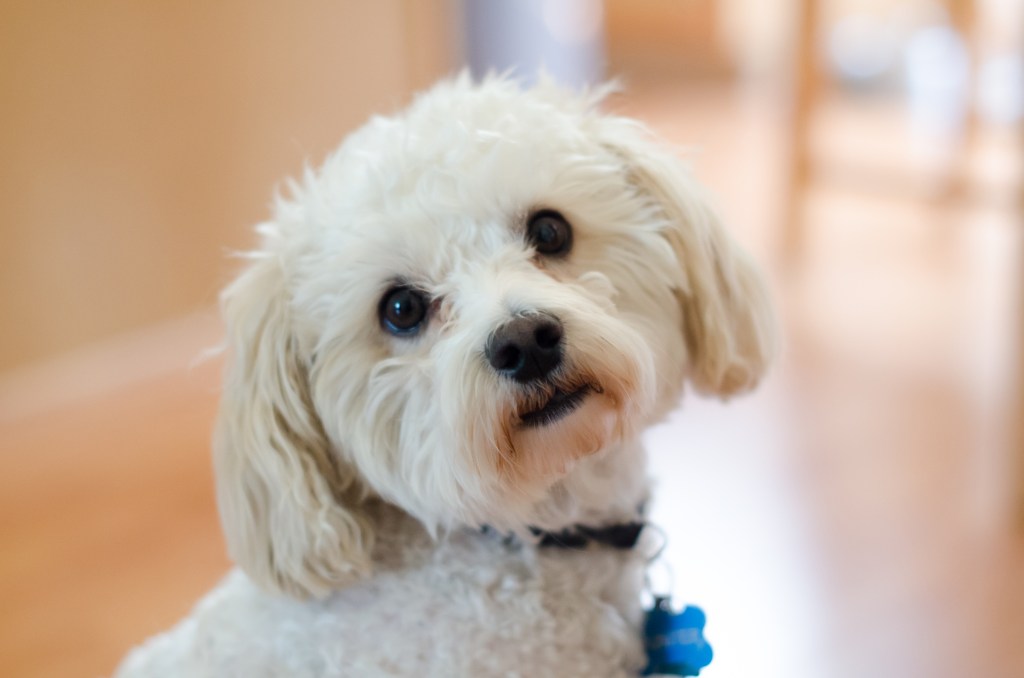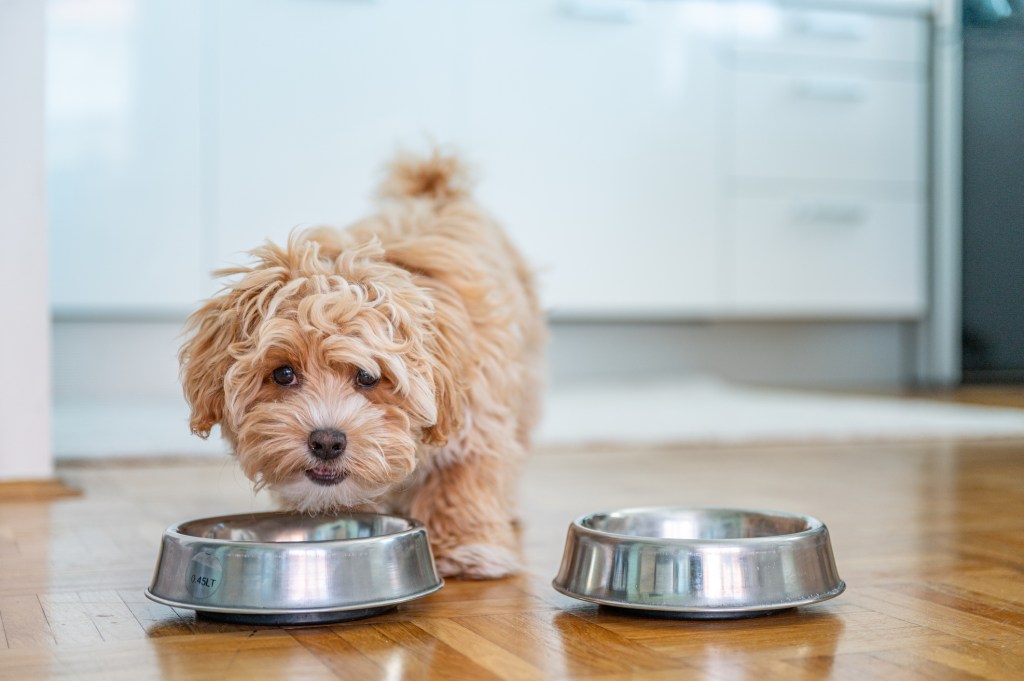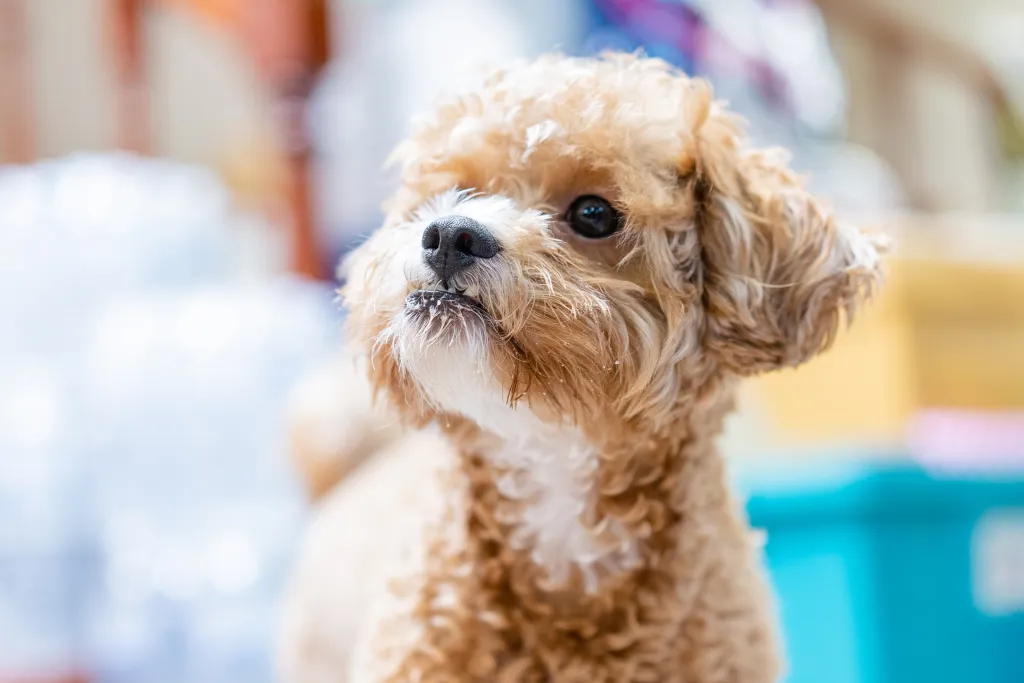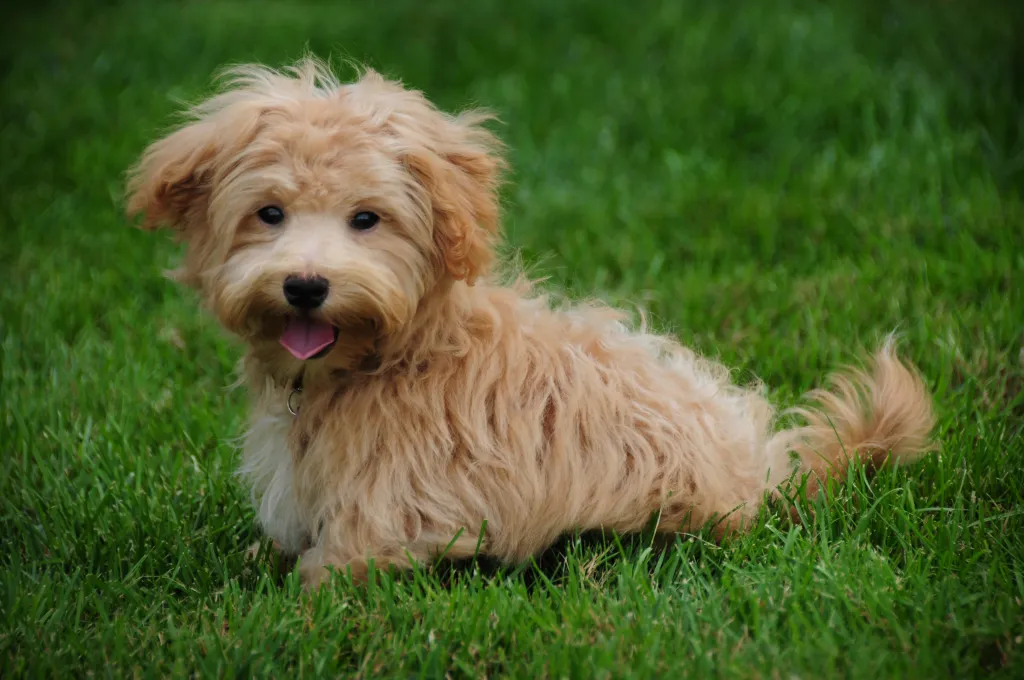The Maltipoo is the adorable result of crossbreeding a Maltese with a Poodle. Recognized for its lovable personality, striking looks, and hypoallergenic coat, it’s perfect for those prone to allergies. Apart from its sturdy yet small physique, this breed can sport a variety of vibrant coat colors, from creamy white to silver.
Smart and trainable, Maltipoos love to keep their owners entertained with their quick grasp of commands and flair for performing tricks.
If you’re in search of a friendly and sociable companion, the Maltipoo is a prime candidate. They easily adapt to various lifestyles, be it for lively families, individual owners, or the elderly. These pups are always up for either a dynamic day at the park or a quiet night at home. However, remember that it’s crucial to socialize your Maltipoo puppies early!
10 Interesting Facts About Earth’s Oceans
If you’re thinking about getting a Maltipoo, why not consider adoption? Rescue organizations and shelters are full of loving dogs that need a home. But, if buying a Maltipoo puppy is more your style, it’s vital to choose a reputable breeder. Make sure you do your homework. A good breeder will prioritize the health and temperament of their dogs, perform needed health checks, and create a nurturing environment for their puppies.
Quick Facts
- Origin: United States. The goal was to combine the Poodle’s hypoallergenic coat and intelligence with the Maltese’s charm and compact size.
- Breed Group: Hybrid (Designer)
- Size: A full grown Maltipoo weighs 5-15 pounds (2.3-6.8 kg). The Teacup Maltipoo weighs around 3 to 5 lbs.
- Lifespan: Maltipoo lifespan ranges from 10-15 years
- Coat: Maltipoos can have a variety of coat types, including straight, wavy, or curly. They often have low-shedding or hypoallergenic coats, which can vary depending on the generation of the cross.
- Temperament: Maltipoos are known for being affectionate, friendly, and sociable. They often form strong bonds with their families and can get along well with children and other pets.
- Exercise Needs: The Maltipoo dog has moderate exercise requirements. Regular playtime, walks, and mental stimulation are important for their well-being.
- Training: Maltipoos are usually intelligent and eager to please, making them trainable. Positive reinforcement methods work well with them.
- Grooming: Grooming needs depend on the coat type. Regular brushing and occasional professional grooming help keep their coat in good condition.
- Health: While generally healthy, Maltipoo health issues can be inherited from both parent breeds. Responsible breeding practices, regular veterinary care, and a balanced diet are important for their overall health.
- The Maltese Poodle is a favorite of celebrities with Rihanna, Blake Lively, and Miley Cyrus all parents to this adorable breed.
RELATED: Paw Patrol Characters Unveiled: Meet the Real-Life Dog Breeds Behind the Iconic Team
Maltipoo Dog Breed Pictures





Adaptability
★ ★ ★ ★ ★
All-around friendliness
★ ★ ★ ★ ★
Health And Grooming Needs
★ ★ ★ ★ ★
Trainability
★ ★ ★ ★ ★
Exercise needs
★ ★ ★ ★ ★
Maltipoo Overview
If you love the gentle nature of the Maltese and the adorable charm of the Toy or Miniature Poodle, allow us to introduce you to their delightful mix – the Maltipoo! Known for their affectionate disposition, they make fantastic companions as well as superb therapy dogs. They are often categorized as designer dogs rather than mixed breeds because they are specifically bred as a mix of two well-recognized breeds.
As both Maltese and Poodles are known to be light shedders, there’s a common hope for the Maltipoo to be hypoallergenic. But for allergy sufferers, it’s important to remember that allergies could develop over time, and all dogs produce allergens in their dander and saliva. So, spend some quality time with several Maltipoos to judge your reaction before you decide to bring one home.
Get ready for an eventful day once you welcome a Maltipoo into your life! They’re energetic, fun-loving and game for anything – be it a playful romp around the house or a pleasant walk outdoors. Maltipoos also make a great choice for novice or timid pet owners. Their quick learning curve and ease of training coupled with their gentle nature, make them particularly suitable for households with elderly members or older children who can handle them with care.
Maltipoos are affectionate pets who love spending quality time with their human families. Adaptable and versatile, they can comfortably live in different home environments, from houses to apartments. However, they should reside indoors and aren’t suitable for households where they’d be left alone for long stretches.
These companionable canines are keen barkers, keenly alerting you to happenings around them. It might take some effort to train them to determine when barking is necessary.
Characterized by their fun-loving nature and happy disposition, Maltipoos have a knack for stealing many a heart. If you’re won over by their cuddly charm and can provide the companionship they yearn for, they could make the perfect pet for you.
Maltipoo Highlights
Adorable Crossbreed: The Maltipoo is a charming and popular crossbreed that combines the best traits of the Maltese and the Poodle.
Hypoallergenic Coat: Known for their low-shedding and hypoallergenic coat, Maltipoos are often a good choice for individuals with allergies.
Compact Size: Maltipoos are small-sized dogs, making them well-suited for apartment living and households with limited space.
Companion Nature: These dogs thrive on companionship and are known for forming strong bonds with their families. They are affectionate and enjoy being around people.
Intelligence: Maltipoos inherit intelligence from both parent breeds, making them quick learners and adaptable to various training commands.
Playful and Social: Maltipoos have a playful and friendly demeanor, making them enjoyable companions for families, singles, and seniors alike.
Moderate Exercise Needs: While they have energy to expend, Maltipoos don’t require extensive exercise. Regular walks and play sessions are usually enough to keep them content.
Training Potential: Due to their intelligence and eagerness to please, Maltipoos are often successful in obedience training and can learn tricks quickly.
Grooming: Their coat requires regular grooming to prevent matting, but their low-shedding nature reduces the amount of hair in the environment.
Long Lifespan: Maltipoos enjoy a relatively long lifespan for a small breed, often living between 10 to 15 years.
Versatile Compatibility: Whether in a family setting, with singles, or with seniors, Maltipoos adapt well to their owners’ lifestyles.
Remember that each individual Maltipoo can have its own unique personality and characteristics, so spending time with a breed representative is essential to understanding if they’re the right fit for your lifestyle and preferences.
Maltipoo History
If you’re an allergy sufferer looking for a small, companionable dog, the Maltipoo could be just the breed for you. While each dog varies in the amount of allergens produced, the Maltipoo has garnered a reputation as a hypoallergenic bundle of joy. This little dog, with its charming fluff and endearing nature, is gaining popularity among dog lovers.
The Maltipoo’s rise is partially thanks to celebrity owners and its place as one of the favored ‘designer breeds’. These loveable dogs typically come from first-generation breeding between a Maltese and a Poodle. However, some breeders choose to breed Maltipoos with Maltipoos. Today, while the Maltipoo isn’t officially recognized as a formal breed, passionate owners formed the North American Maltipoo/Maltepoo Club and Registry to champion this adorable crossbreed.
altipoo Size
The Maltipoo varies in size, depending on whether the Poodle parent was a Toy or Miniature. Generally, Maltipoos stand 8 to 14 inches tall and weigh 5 to 20 pounds.
Maltipoo Personality
If you’re looking for a loving, intelligent, and fun companion, look no further than a Maltipoo. These friendly pooches adore their humans, relishing in lap cuddles and leisurely strolls. But don’t be fooled — they enjoy an energetic playtime just as much!
Although Maltipoos are alert and make great alarm dogs, don’t expect them to double as a guard dog. Their true strength lies in their sociability. To nurture this, it’s important to expose your Maltipoo puppy to a variety of people, locations, and situations through early socialization. This way, your furry friend can grow into a well-rounded adult dog.
Maltipoo Health
Not all Maltipoos will get any or all of these diseases, but it’s important to be aware of them if you’re considering this crossbreed.
- White Shaker Syndrome manifests as tremors over the entire body, lack of coordination, and rapid eye movements. Episodes usually start when the dog is six months to three years old and is stressed or overly excited. This condition isn’t painful and doesn’t affect the dog’s personality. If you suspect your Maltipoo has White Dog Shaker Syndrome, talk to your vet about treatment options.
- Epilepsy causes seizures in the dog. Epilepsy can be managed with medication, but it cannot be cured. A dog can live a full and healthy life with the proper management of this disorder, which can be hereditary or of unknown cause.
- Patellar Luxation, also known as “slipped stifles,” is a common problem in small dogs. It is caused when the patella, which has three parts-the femur (thigh bone), patella (knee cap), and tibia (calf)-is not properly lined up. This causes lameness in the leg or an abnormal gait, sort of like a skip or a hop. It is a condition that is present at birth although the actual misalignment or luxation does not always occur until much later. The rubbing caused by patellar luxation can lead to arthritis, a degenerative joint disease. There are four grades of patellar luxation, ranging from grade I, an occasional luxation causing temporary lameness in the joint, to grade IV, in which the turning of the tibia is severe and the patella cannot be realigned manually. This gives the dog a bowlegged appearance. Severe grades of patellar luxation may require surgical repair.
- Portosystemic Shunt (PSS) is an abnormal flow of blood between the liver and the body. That’s a problem, because the liver is responsible for detoxifying the body, metabolizing nutrients, and eliminating drugs. Signs can include but are not limited to neurobehavioral abnormalities such as poor balance, lack of appetite, hypoglycemia (low blood sugar), intermittent gastrointestinal issues, loss of appetite, urinary tract problems, drug intolerance, and stunted growth. Signs usually appear before two years of age. Corrective surgery can be helpful in long-term management, as can a special diet.
- Progressive Retinal Atrophy (PRA) is a degenerative eye disorder that eventually causes blindness from the loss of photoreceptors at the back of the eye. PRA is detectable years before the dog shows any signs of blindness. Fortunately, dogs can use their other senses to compensate for blindness, and a blind dog can live a full and happy life. Just don’t make it a habit to move the furniture around. Reputable breeders have their dogs’ eyes certified annually by a veterinary ophthalmologist and do not breed dogs with this disease.
- Legg-Calve-Perthes Disease affects many toy breeds. When your Maltipoo has Legg-Perthes, the blood supply to the head of the femur (the large rear leg bone) is decreased, and the head of the femur, which connects to the pelvis, begins to disintegrate. Usually, the first signs of Legg-Perthes, limping and atrophy of the leg muscle, occur when puppies are 4 to 6 months old. The condition can be corrected with surgery to cut off the diseased femur so that it isn’t attached to the pelvis any longer. The scar tissue that results from the surgery creates a false joint and the puppy is usually pain free. Prognosis is generally very good after the surgery and many dogs suffer only minor lameness, particularly during weather changes.
If you’re considering getting a Maltipoo, it’s vital to understand the health risks associated with their parent breeds, the Maltese and the Poodle. Each parent should have health certifications from reputable organizations like the Orthopedic Foundation for Animals for knee and thyroid health, and the Canine Eye Registry Foundation (CERF) for eye health. These health checks also include a DNA test for an eye condition known as progressive retinal atrophy (PRA). Keep in mind that full health clearances won’t be available for dogs less than 2 years old, as some health issues may not surface until adulthood. Therefore, when choosing a breeder, opt for those who breed their dogs when they’re at least two to three years old.
Maltipoo Care
Adored for their friendly nature, Maltipoos should be kept indoors as part of the family. They are perfectly suited to apartment living, as long as they get their daily exercise and aren’t encouraged to become nuisance barkers. They’re intelligent and respond well to training, especially when it involves positive reinforcement like food, play, and praise.
Keeping a Maltipoo energized is pivotal to prevent destructive behavior. With just a 10 to 15-minute exercise routine like walking or playing fetch in a secured space, they can stay content. But be cognizant of their tendency to alert bark, especially if you live in sound-sensitive environments.
Maltipoo Feeding
1.5 cups of quality dog food each day, divided into two meals. How much your dog needs varies with their size, age, build, metabolism, and activity. Remember, each dog is unique and has specific nutritional needs. Active dogs require more food compared to dogs with a sedentary lifestyle.
The type of dog food you choose impacts how much your dog needs to eat. High-quality food provides more nutrition, so your dog needs less of it. It’s best to feed your Maltipoo twice a day, rather than leaving the food out constantly. To check if your Maltipoo is overweight, conduct two simple tests. Visually inspect your dog’s waist—it should be visible. Then, run your hands along his back and ribs. You should be able to feel, but not see, his ribs.
If you’re unable to feel his ribs, he might need less food and more exercise. For more advice on feeding your Maltipoo, check out our tips on choosing the right food, the best practices for feeding your puppy, and strategies for feeding your adult dog.
Maltipoo Coat Color And Grooming
The Maltipoo is adorned with a wool-like, medium to long-length coat, that varies from slightly wavy to curly. Coats are typically cream, white, or silver and shed minimally. This makes them great for those with allergies due to their low dander.
To keep your Maltipoo looking his best, daily brushing is key, especially to prevent matting. A trim and clip every month or so will maintain a clean and cool appearance. Regularly washing your Maltipoo about once a month ensures a soft, clean coat.
Eye area grooming is vital for neatness, while ear cleaning prevents the build-up of dirt and moisture. Essential grooming aspects also include dental hygiene and nail care. Brush your Maltipoo’s teeth two to three times a week for optimal oral health. Daily brushing is even better.
Nail trims should occur once or twice a month. If you notice the nails clicking on the floor, they are due for a trim. Besides, trimmed nails protect your legs from scratch marks when your loving Maltipoo jumps up to say hello.
Introduce your Maltipoo to grooming early in puppyhood. Regularly handling his paws and checking his mouth and ears prepares him for future veterinary visits and daily grooming as an adult. Remember, groom time is also bond time, filled with praises and rewards!
Maltipoo Children And Other Pets
Maltipoos, being sociable animals, mesh well with children. But keep in mind, due to their small size, they aren’t ideal for households with children under six—they risk getting hurt. Always instruct kids on how to engage considerately with your Maltipoo.
Ensure you supervise interactions between young children and your Maltipoo to avoid potential incidents such as biting or ear pulling. Maltipoos generally coexist peacefully with other animals, even if they weren’t raised together.
Maltipoo Breed Organizations
Choosing a trustworthy breeder is a crucial step in welcoming a new dog into your home. Such breeders prioritize the health and social skills of the puppies they breed, ensuring they make excellent pets. They screen for potential health issues and provide essential socialization, as well as lifelong support to you.
In contrast, some breeders are more concerned about profits than pet welfare. These breeders may overlook health screenings and proper socialization, leading to puppies that are prone to health and behavioral problems.